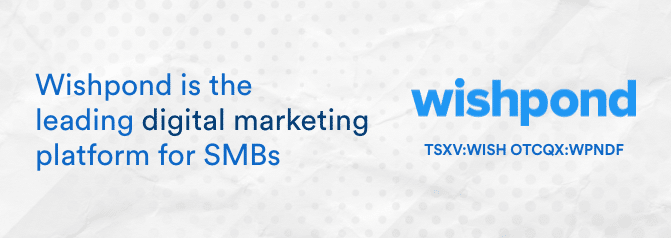

Workplace collaboration apps are a notable hot space in the tech sector right now, with several large players out in front. But what if your workplace is amateur sports?
Enter RosterBot, a team management and scheduling tool (or is it a social network?) aimed at amateur sports leagues.
Developed by Ian Andrew Bell in 2008, RosterBot is cloud-based software that allows team members, coaches and “fans” (think grandma and grandpa) to sync their lives with the schedule of their team, or their kids’ team.
Technology is always a response to a real-life problem, and Mr. Bell created the app initially to help his shinny hockey buddies remember to show up for practices and games.
After a fortuitous meeting with ex-Vancouver Canuck Bret Hedican, still fondly remembered for his key role on the almost-Stanley Cup winning team in 1994, the two managed to recruit Chief Technology Officer Greg Hope, formerly with Microsoft.
Vancouver’s Sora Capital put up $1 million in seed money, despite the fact that the platform is basically freeware and the company had no clear path to profitability.
Some would argue, neither did Facebook or Twitter, and they seem to be doing all right.
Today, RosterBot is a study of an idea that has found itself at an archetypal technology fork in the road. It is a small company facing questions that much larger concerns like Dropbox, Hulu, LinkedIn and Skype have, at one time or another, stared down. Is there money to be extracted from an existing user base who have so far enjoyed the free use of an app for what is basically a recreational purpose? Will anyone put up with a “freemium” version or any variety of subscription model?
These are questions without easy answers.
Even with the extra features, the question of monetization remains. It’s clear that RosterBot’s user base loves the app. After all, it’s free and very useful. The more time passes, the less its users are able to imagine life without it.
Mr. Bell freely admits that he started the app altruistically, with no thought towards pursuing the kind of VC money available to start-up companies that can scale. In that sense, RosterBot was like Couchsurfing.com, a way to build a community around a particular hobby, with no particular intention of monetizing.
That has changed.
Last October, Bell and Hedican appeared on CBC’s Dragons’ Den to pitch RosterBot.
A deal was struck on air, but scuppered backstage when the pair discovered that the 120-day exclusivity clause demanded by the Dragons would jeopardize pending deals that RosterBot had outside the show.
Fretting over the company’s monthly burn rate and relatively low subscription base of 90,000, Dragon Mike Wekerle agreed to enter a due diligence phase and then to hook the pitchers up with industry insiders to figure out how to scale the business. This would have to be done, of course, without completely alienating the good-faith subscribers who, after all, provide labour and data to the company willingly and free of charge in exchange for a service.
With an idea like RosterBot, any investor with an eye towards a return is going to try to emulate existing business models along the lines of Software-as-a-Service, which provides reliable recurring revenue.
But there is a problem. RosterBot’s demographic doesn’t seem to hold the same kind of cash-heavy top-level clients that, say, Hootsuite can rely on in order to provide its product “free” to all the other lower-stakes users, who are basically just using it for personal social media purposes.
Hootsuite counts 743 of the Fortune 1000 companies among its clients. Those are the people who pay, financially, for Hootsuite. The other 10 million of Hootsuite’s users “pay” socially for Hootsuite, allowing the company to collect data and study human behaviour that they can then use for marketing purposes, in exchange for a service the users wouldn’t otherwise have.
If you aren’t paying for the product, goes one of the tech industry’s well worn chestnuts, then you are the product.
RosterBot is counting on the loyalty it has built up among its user base to adopt a graduated service, in which its more feature-rich version will be available to those willing to pay for it. But getting that balance right is going to be the difference between success and failure.
It’s very hard to imagine that top layer of clients existing for RosterBot, unless it managed to sign up a major professional sports league or two.
So the user base remains moms and dads of children enrolled in intramural leagues as well as middle-aged beer league enthusiasts.
Bell and Hedican have, to invoke another well worn phrase, pivoted. Recently, RosterBot has added a financial management component into its app, allowing teams to manage their budgets, and also added in some instant messaging and media communications features.
Even with the extra features, the question of monetization remains. It’s clear that RosterBot’s user base loves the app. After all, it’s free and very useful. The more time passes, the less its users are able to imagine life without it. The service’s users share it with others enthusiastically. So how betrayed will those users feel when features are withheld behind a paywall, or when a subscription service springs up offering the feature-rich version of RosterBot in favour of the free “basic” version?
We hear a lot about the winners who have succeeded using freemium models, but the technology space is littered with those who simply couldn’t convince its superfans to open their wallets.
So where does RosterBot go from here?
RosterBot might consider adding the idea of gamification to the mix, allowing teams or leagues or players to compete with each other for “points”, or the RosterBot equivalent of “likes” or followers, sort of how GasBuddy fostered a sense of community by encouraging healthy competition among its users in exchange for points or swag like T-shirts.
Ultimately, though, no amount of tech woo is going to obscure RosterBot’s real purpose: to help players and parents of players schedule their real lives around sporting events. That core functionality has to remain free in order to be useful.
Bret Hedican went on to win the Stanley Cup with the Carolina Hurricanes twelve years after his near miss with the Vancouver Canucks. So the RosterBot team has at least one member who knows both failure and success from a sports angle, which dictates that you either win the Cup or go home.
What RosterBot has in common with Facebook is that its users have developed a sense of ownership over what they regard as “free” software. How Facebook has managed to make that work is through the merciless exploitation of user data, turning the social media giant into nearly the largest marketing platform in the world (the largest, obviously, is Google).
Another opportunity for monetization comes through marketing. Allowing sports merchandisers to target RosterBot’s user base with highly relevant advertising opens a whole window onto a revenue stream that, while it might be irritating to the app’s free users, at least won’t seem as random and meaningless as it does via other marketing platforms.
RosterBot is counting on the loyalty it has built up among its user base to adopt a graduated service, in which its more feature-rich version will be available to those willing to pay for it. But getting that balance right is going to be the difference between success and failure.
Failure has become a bit of a badge of honour among entrepreneurs these days, particularly in start-up culture, where some view it as a noble pursuit to be encouraged.
For those coming at entrepreneurship from a sports angle, though, the whole concept of “failure” and “success” is tied up with the idea of ultimate victory, of winning the Stanley Cup, with the little failures and incremental successes during the year amounting to temporary blips on the road to greatness.
For the Vancouver Canucks in 1994, failure amounted to the sound of a puck pinging off a goalpost, from a shot by rookie Nathan LaFayette, against the New York Rangers during Game 7 of the Stanley Cup final. A matter of a single inch, and the game would have been tied. Vancouver might have won.
The sound of that pinging goalpost likely haunts Mr. LaFayette to this day. It’s the ping of failure.
Those are the terms of “success” or “failure” that ex-Canucks are familiar with. The stakes for success or failure for an app might feel a little lower comparatively.
Bret Hedican went on to win the Stanley Cup with the Carolina Hurricanes twelve years after his near miss with the Vancouver Canucks. So the RosterBot team has at least one member who knows both failure and success from a sports angle, which dictates that you either win the Cup or go home. But the company must proceed carefully from here.
To emerge as a success RosterBot will need to be bold, and creative, and decisive. But, in in the parlance of the rink, it will also need to show that it has “soft hands”.
Leave a Reply
You must be logged in to post a comment.





 Share
Share Tweet
Tweet Share
Share




Comment